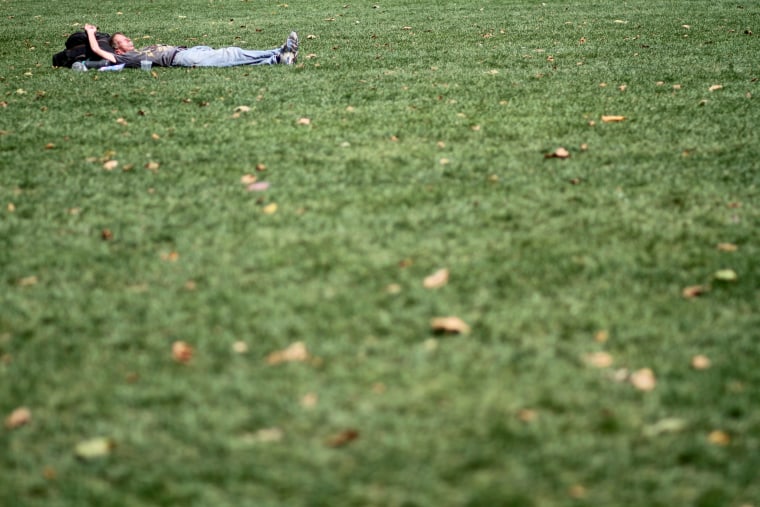In New York City's Central Park lies a patch of lawn called Sheep Meadow, which springs to life on summer weekends with visitors tossing Frisbees and soaking up the sun. Yet like many other parts of the country, the Meadow is also alive with another, more permanent, visitor: the very grass itself.
Much of the grass on U.S. lawns originally arrived from somewhere else, but has now become a $40 billion industry, taking up space in residential yards, parks, golf courses and athletic fields. Otherwise known as turfgrass, these green spaces are expanding their reach across the country, but also stirring a debate about the environmental impact of maintaining healthy lawns.
The idea of having a patch of green is generally believed to have arrived to the U.S. from overseas. "It was a status symbol" in Europe, says Susan Barton, associate professor in plant and soil sciences at the University of Delaware. It has since become, she says, a part of the American "suburban dream."
Meanwhile, the grass itself often comes from as far as the other side of the world. The Kentucky bluegrass, for example, is originally from Europe—not the state, as its name would suggest—while Centipede grass is derived from China and Southeast Asia.
Read More From CNBC: America’s top states for innovation in 2015
The Lawn Institute cites the beneficial impact turfgrass has on the climate, working as "exterior air conditioners" that help prevent soil erosion and filter dust, smoke and pollutants from the air, among other benefits. According to industry estimates, there are some 50 million acres of turfgrass covering the country—the equivalent of the amount of harvestable land for wheat, according to data by the U.S. Department of Agriculture.
In fact, various studies support the idea that turfgrass can even capture carbon from the atmosphere. A recent study by HortScience, a journal by the American Society for Horticultural Science, found that lawns have carbon sequestration properties integral to combating climate change.
Lawns can absorb carbon but the procedures required to maintain it also emit greenhouse gases. If a lawn sucks down more CO2 than it gives off, experts refer to it as a "carbon sink." On average, many lawns across the country are sinks, recent studies show.
Read More From CNBC: Is North Dakota's economy really oil-rigged?
However, those benefits aren't as cut and dried as they appear. HortScience notes that by using certain techniques in certain regions, lawn maintenance "can offset the benefit" of carbon sequestration. That means it's up to the property owner to know what works best in her neck of the woods—which in some instances may be easier said than done.
According to Kevin Morris, president of the National Turfgrass Federation, the drought-hit state of California is a testament to that principle. "There are several species of turfgrass that could be used in California and would use considerably less water than what is currently utilized by most homeowners," he said.
Morris said the kind most often used in sunny California is, perhaps surprisingly, not warm-season grass, but rather that used in cooler climates. So why aren't drought-stricken Californians opting for the less thirsty turf?
Some researchers suggest one reason is a lack of consumer education. Morris provides a more cosmetic explanation. Warm-season grass turns brown in the winter when it becomes dormant, he says, "which many homeowners are not accustomed to, and frankly, do not want."
